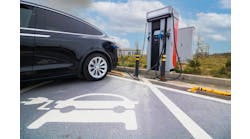Insurance is in the early stages of disruption at each point in the value chain due to technology and innovation, similar to the impacts of technology on the banking industry in the early 2000s. Autonomous vehicles also are a force beginning to impact the insurance industry. What is the future impact of autonomous vehicles, and how soon and how adverse will the impact be? The impact of autonomous vehicles will be slower and far more nuanced than usually predicted. The industry does not exactly promise the elimination of all accidents, but strongly suggests that if only the number of human drivers could be greatly reduced, accidents would be rare.
The sharing of the road by human drivers and autonomous vehicles will increase the challenges for actuaries. How will actuaries rate drivers—or autonomous vehicles? There will be increasing pressure on insurance companies to decrease premiums due to greater sales of autonomous vehicles. Will more autonomous vehicles initially, significantly reduce premium rates? Will the cost of replacing more costly autonomous vehicle systems involved in accidents be more than the savings due to a reduction in accidents? When will claims begin to decrease due to the increasing percentage of autonomous vehicles? The autonomous driving software industry is in its infancy, and the winning companies may not yet have been born. How can an insurance company rate different AV software without the actual vehicle data, and who owns the data that the vehicle collects—the software company, manufacturer or the owner of the vehicle? This data issue may only be solved via federal legislation.
The insurance industry must take a cooperative leadership position with consumer groups, autonomous software companies, manufacturers and legislative leaders on data ownership and use.
Society would be of course greatly improved with each reduction in accidents. What is not fully understood or appreciated is the importance of the investments of insurance companies in the U.S. economy. The more interesting and important impact is the potential decrease in premium income for the auto insurance companies. The strategic direction and organizational structure of the companies is based on projected premium and claims activity. What is the impact if both premiums and claims activity decrease by 25% or 50% in 10 to 20 years? What is the impact on the insurance agents and agencies? Staffing at the insurance companies?
Times of great marketplace change and disruption usually create opportunities with those who properly adapt and change. The financial and marketplace impact of AVs combined with the impact of technology may cause watershed events that the auto insurance industry has never seen.
Again, I want to stress the reduction in accidents is an extremely positive event for individuals, families and society. However, we should recognize the financial impact on many other industries. What is the total economic activity created from vehicle accidents? What are the economic impacts with a 25% or 50% reduction in accidents?
The first to come to mind are hospitals. If a hospital is viewed as a business, a significant percentage of that business is the tragic result of vehicle accidents. If emergency visits and resulting treatments decrease by 25% or 50%, it will have a significant adverse impact for both the hospital and staff. Plus, the providers who provide care for a return to normal activities. There is an entire medical industry that has been developed to care for and cure those injured in motor vehicle accidents. Another area that comes to mind is vehicle repair. What does a 25% or 50% reduction in repairs do to those companies and staff? Moreover, if accidents are reduced 50% what is the impact on new and used car sales?
What this all means is that insurance companies need to change their strategies now. Later may well be too late.



